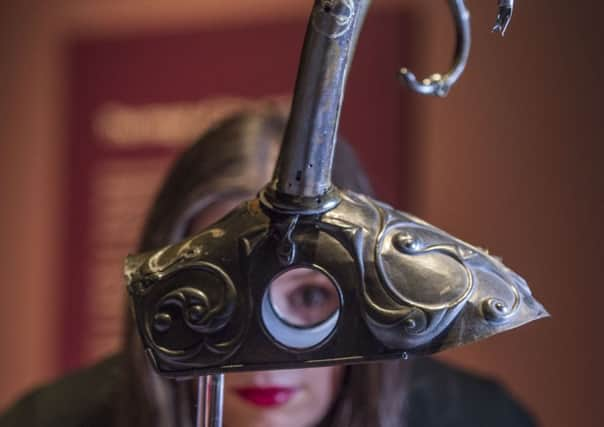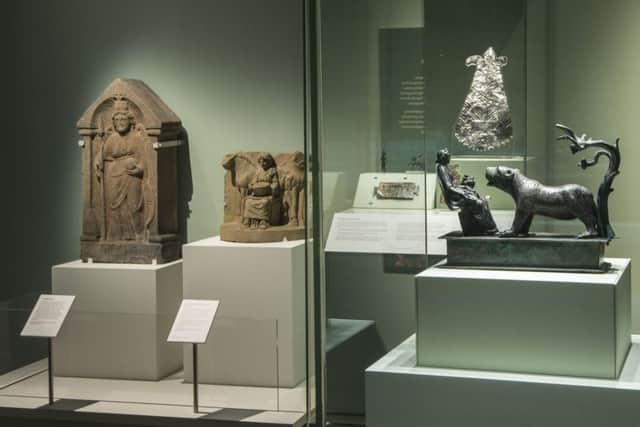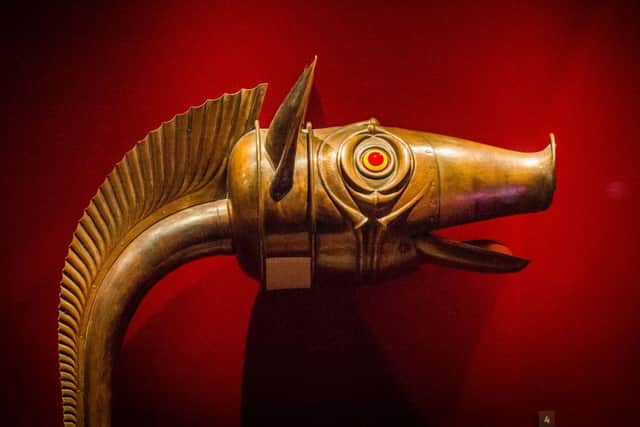Exhibition review: Celts, National Museum of Scotland, Edinburgh


Celts | Rating: ***** | National Museum of Scotland, Edinburgh
Who were the Celts? Are we Celts? I rather think that Celts, the brilliant new exhibition at the National Museum of Scotland (NMS), set out originally to give a very negative reply to such questions. Planned jointly by the NMS and the British Museum in the run-up to the referendum, reading the catalogue you get a distinct feeling that part of the agenda (the southern part I hope) was to shatter the delusions of noisy people who imagine they are Celts.
Advertisement
Hide AdAdvertisement
Hide Ad“There never was a single pan-European ancient people called the Celts; there was no single culture; there was no single language,” the catalogue declares bluntly. However the frequency of the syllable Cel, Cal, or Gal in names like Gauls, Galicians, Galatians, Caledonians, or Gaels and others too, does suggest some sense of common identity. They didn’t share a language, but their languages shared a root. As for a single culture, the exhibition itself answers that. Triumphantly overriding 21st century politics, it is a spectacular display of a sophisticated and distinctive art that flourished for almost 2,000 years. It was diverse, absorbed outside influences, but nevertheless remained instantly recognisable. Originally pan-European, disrupted by the Roman Empire, it continued to flourish in Britain’s Celtic Fringe where, too, artists seem always to have been conscious of a centuries long tradition that they could invoke to declare their identity. Indeed, the Celtic Revival may simply have been the last (or most recent?) of many – or perhaps it just reflected continuity. In the last room, an 18th-century dirk is decorated with the interlace identified with Celtic art. Tim Neat filmed Highland tinkers decorating metalwork with curvilinear designs in the 1970s.


The show itself is also much more nuanced than the catalogue, particularly here in Scotland. At the British Museum, for instance, a disproportionate amount of space was given to the Celtic Revival with the clear implication that it was solely responsible for the irritating fiction of a Celtic identity. Happily, too, in the Scottish showing labels have been revised to be less contentious and this dismissive coda radically cut. It now simply illustrates how the Celts were rediscovered through Greek and Latin literature, recognition of their related languages, and recognition and later also imitation of the powerful, non-classical artistic tradition which the show celebrates.
It opens with a tall, suitably enigmatic figure in a horned helmet from the fifth century BC. A set of bronze chariot fittings from Bulgaria, decorated with abstract curvilinear shapes, shows both the typical art forms of early Celtic art and their European spread. Then nearby, to show that the Celtic Revival is also part of the story, but not the whole of it, hangs Henry and Hornel’s painting of the Druids.
A superb bronze shield decorated with elegant, sinuous forms of the kind taken up by Art Nouveau, demonstrates how the people the Greeks and Romans called barbarians were both highly sophisticated and in their art strikingly different from their self-important southern neighbours. Startling, beautiful and very rare are ceramic pots decorated with abstract and animal designs. In place of Greco-Roman naturalism, Celtic designs connect to the natural world through shape-shifting or metamorphosis. They hint at the presence of birds and beasts or strange creatures rather than portray them directly and so suggest how things divine, animal and human are interconnected, not separated. Perhaps the Latin poet, Ovid, who recorded rural and folk traditions of just this kind in his Metamorphoses, is transmitting a distant echo of this ancient world view. After all, there were Celtic speaking people on both sides of the Alps.
In a warrior society there were beautifully decorated weapons and magnificent cauldrons for feasting, none more splendid than the huge Gundestrup Cauldron, the centrepiece of the show. Made from beaten silver, it was found in a Danish bog, but it was made in south-east Europe, perhaps by Thracian metalworkers. Its iconography of gods and narrative scenes suggest an epic worthy of Homer or Beowulf and may reflect Celtic traditions, but it also includes elephants and a god in a yogic posture. It is both superb and enigmatic. It can be used to debunk the idea of Celtic art, but more probably it demonstrates that the people we call Celts were not only warriors, but traders and travellers perfectly capable of commissioning a major piece of art from the people who had the skills they needed.


Women seem to have enjoyed real status in these societies. Bronze mirrors decorated with highly complex geometrical designs not only reflect this, but also the mathematical sophistication of the artists. The jewellery, whether for women or for men, is exquisite. A gold brooch of a warrior battling a mythic beast, (or just talking to his dog) is a truly fabulous object. Torcs which we are told were not a badge of Celtic identity, though the Romans thought they were, are astonishing, not only in their beauty, but as a sheer display of wealth. One silver torque weighs seven kilos. The same is true of the penannular brooches which later became signature objects of Celtic art and dress in Scotland and Ireland, The seventh-century Hunterston brooch from Ayrshire is one of the stars of the show.
It is surprising how little figurative Roman art seems to have impinged on its Celtic equivalent. Although the Celts do seem occasionally to have adopted the human figure for their gods, a naturalistic bronze of the bear goddess Artio, both as a bear and as a woman, though superb, seems out of place.
Advertisement
Hide AdAdvertisement
Hide AdMassive bronze jewellery in distinctively non-classical forms from the Pictish north-east seems to assert a distinct identity when southern Britain was under the Roman yoke. Then with the advent of Christianity the religious art of Scotland and Ireland reached new glories. It incorporated inspiration not just from Rome and Byzantium, but from the Anglo-Saxons and Vikings as well, but also kept a self-conscious identity. The Monymusk Reliquary, one of Scotland’s most sacred objects, shows this quite clearly. There is piety, too, both religious and artistic in the way the case made in the Middle Ages for St Fillan’s crozier echoes a much earlier historic style. Revivals can have meaning in any period.
Illuminated manuscripts are not so richly represented here as they were in London, but text carved on a fragment of a cross recently excavated at Portmahomack points to the close links between Pictish carved stones and the great manuscripts of the period. One of the supreme examples of this page design in stone, the Hilton of Cadboll stone, made by the artists of Portmahomack, is not in the exhibition, but is there to be admired downstairs. If it could have been moved upstairs, the Picts would have had a better showing. They should be an ace even in this company, but that is a small cavil. Just see the show and be proud to be a Celt.
• Until 25 September